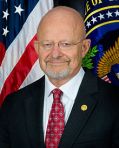Jonathan Turley July 3 2013
 I previously wrote a column how our country seems to have developed separate rules for the ruling elite and the rest of us. There is no better example than the lack of response of the Senate to the admitted perjury of Director of National Intelligence James Clapper before Congress. While the Justice Department has prosecuted people for the smallest departure from the truth, including testimony before Congress, no one in the Senate is calling for an investigation, let alone a prosecution, of Clapper. For his part, Attorney General Eric Holder is continuing his political approach to enforcing the law and declining to even acknowledge the admitted perjury of Clapper. Now, in a truly bizarre moment, Clapper has written a letter of apology like an errant schoolboy to excuse his commission of a felony crime . . . and it appears to have been accepted. What is curious is that we do not have letters from senators like Dianne Feinstein apologizing to doing nothing when they were all aware that Clapper was lying in his public testimony.Welcome to America’s Animal Farm.
I previously wrote a column how our country seems to have developed separate rules for the ruling elite and the rest of us. There is no better example than the lack of response of the Senate to the admitted perjury of Director of National Intelligence James Clapper before Congress. While the Justice Department has prosecuted people for the smallest departure from the truth, including testimony before Congress, no one in the Senate is calling for an investigation, let alone a prosecution, of Clapper. For his part, Attorney General Eric Holder is continuing his political approach to enforcing the law and declining to even acknowledge the admitted perjury of Clapper. Now, in a truly bizarre moment, Clapper has written a letter of apology like an errant schoolboy to excuse his commission of a felony crime . . . and it appears to have been accepted. What is curious is that we do not have letters from senators like Dianne Feinstein apologizing to doing nothing when they were all aware that Clapper was lying in his public testimony.Welcome to America’s Animal Farm.
When National Intelligence Director James Clapper appeared before the Senate, he was asked directly, “Does the NSA collect any type of data at all on millions or hundreds of millions of Americans?” Clapper responded, “No, sir. … Not wittingly.”
We now know that was a lie. Moreover, many of the senators who heard that testimony knew it was a lie because they admitted later to knowing about the NSA program to gather data on every citizen. Later, Clapper said that his testimony was “the least untruthful” statement he could make. Yet, of course, that would still make it an untrue statement — which most people call a lie and lawyers call perjury. Indeed, when Roger Clemens was prosecuted for untrue statements before Congress, he was not told of the option to tell the least untrue statement on steroid use.
